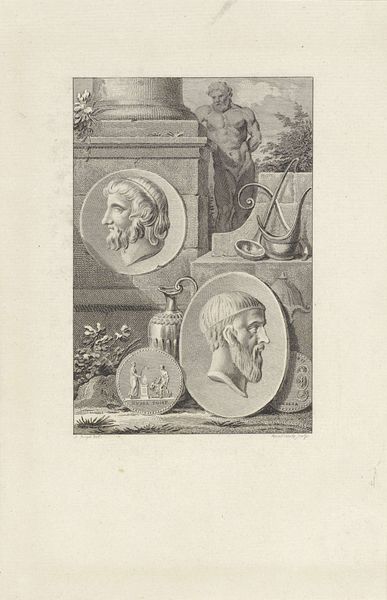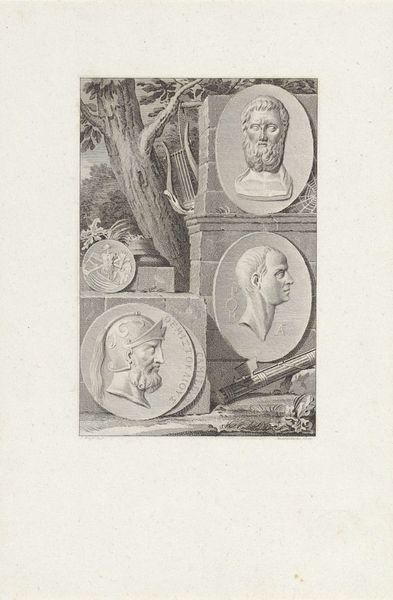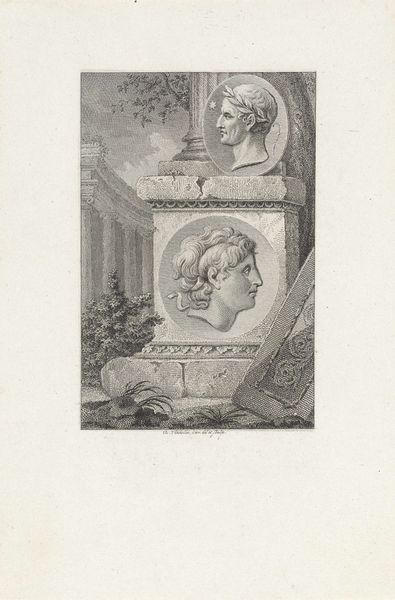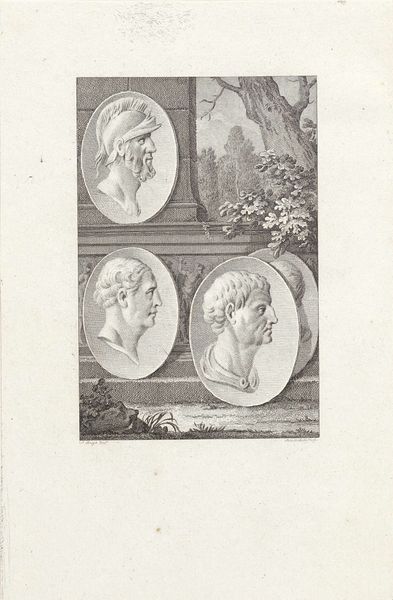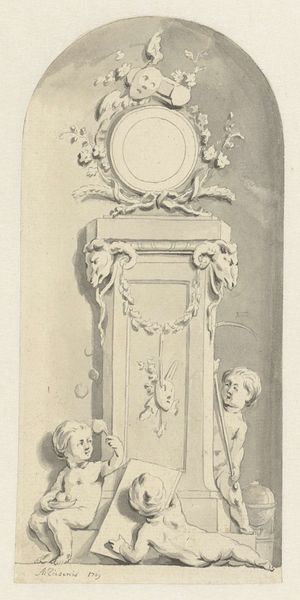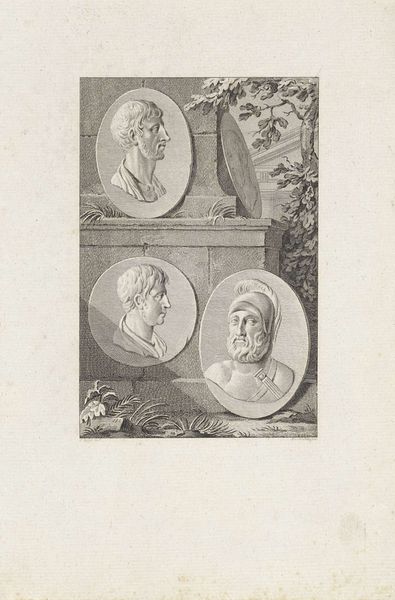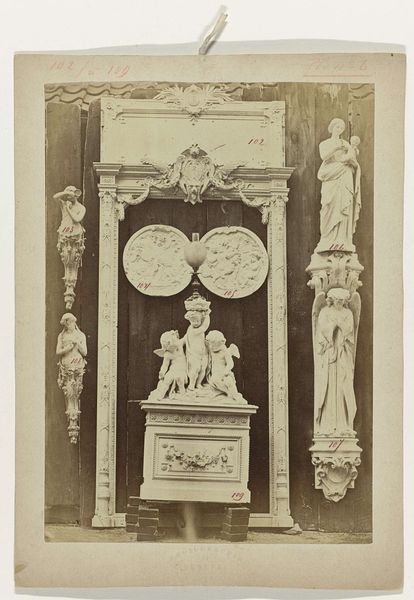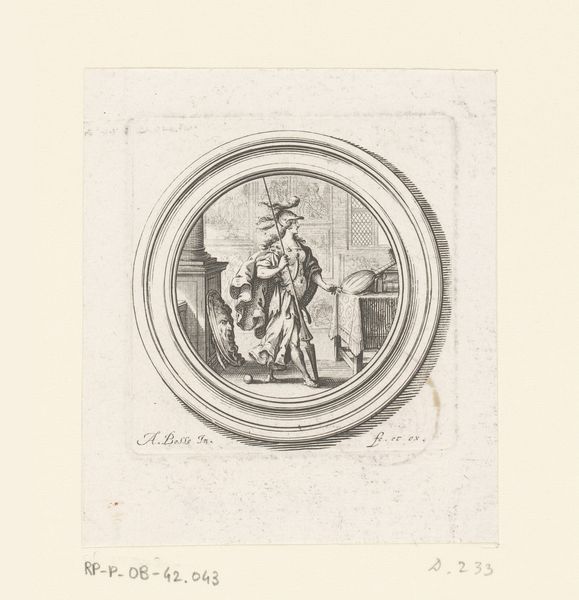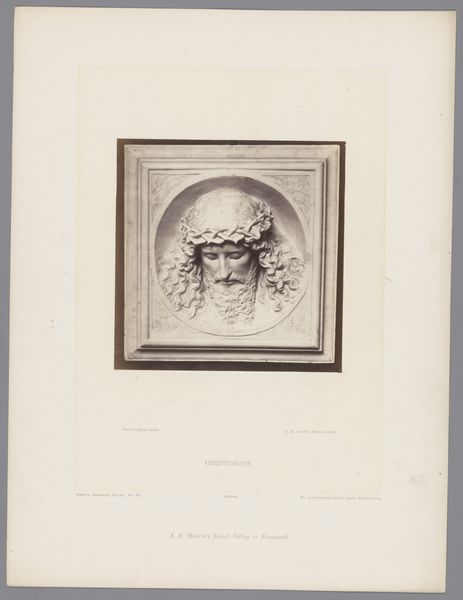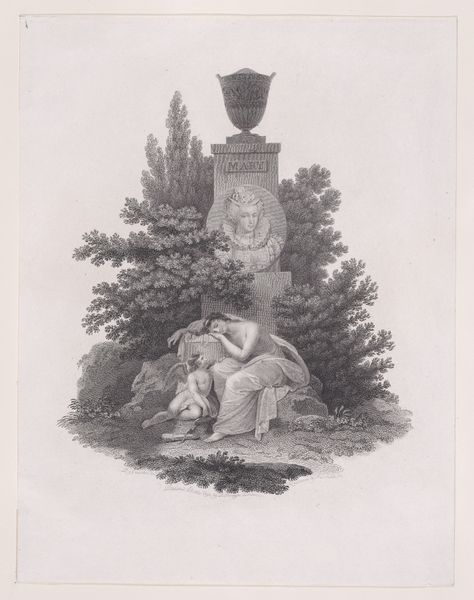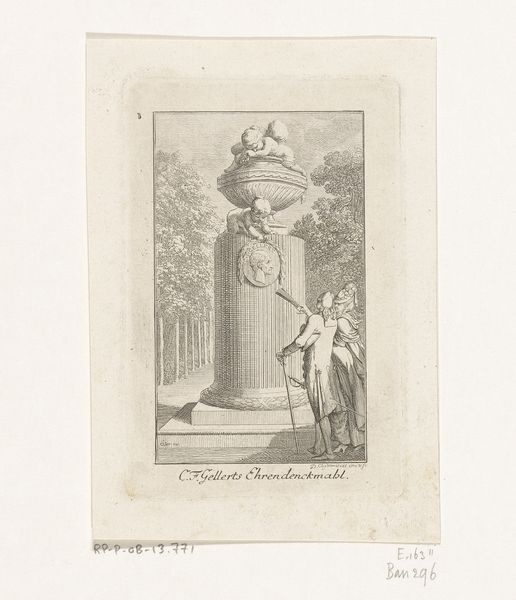
print, paper, engraving
#
portrait
#
neoclacissism
# print
#
greek-and-roman-art
#
classical-realism
#
figuration
#
paper
#
form
#
geometric
#
line
#
history-painting
#
engraving
Dimensions: height 236 mm, width 158 mm
Copyright: Rijks Museum: Open Domain
Reinier Vinkeles made this print of Theseus and Romulus sometime before his death in 1816, using etching and engraving. The density of lines creates an impressive range of tone; notice how the artist modulated the light to give the stony architecture a feeling of depth. The etched lines create a burr when the acid bites into the plate. This gives a velvety texture, particularly evident in the background foliage. Vinkeles's skill is also clear in the crisp, clean lines of the medallions themselves. Prints like this played a crucial role in the circulation of knowledge. Before photography, they were the primary means by which images were disseminated. This print would have allowed people to study classical sculpture without traveling to see it firsthand. The labor involved in creating such a detailed print, and the intellectual labor of studying the past, are both embedded in this remarkable work. By appreciating these aspects, we can move beyond simply seeing it as a reproduction, and recognize its own unique value.
Comments
No comments
Be the first to comment and join the conversation on the ultimate creative platform.
